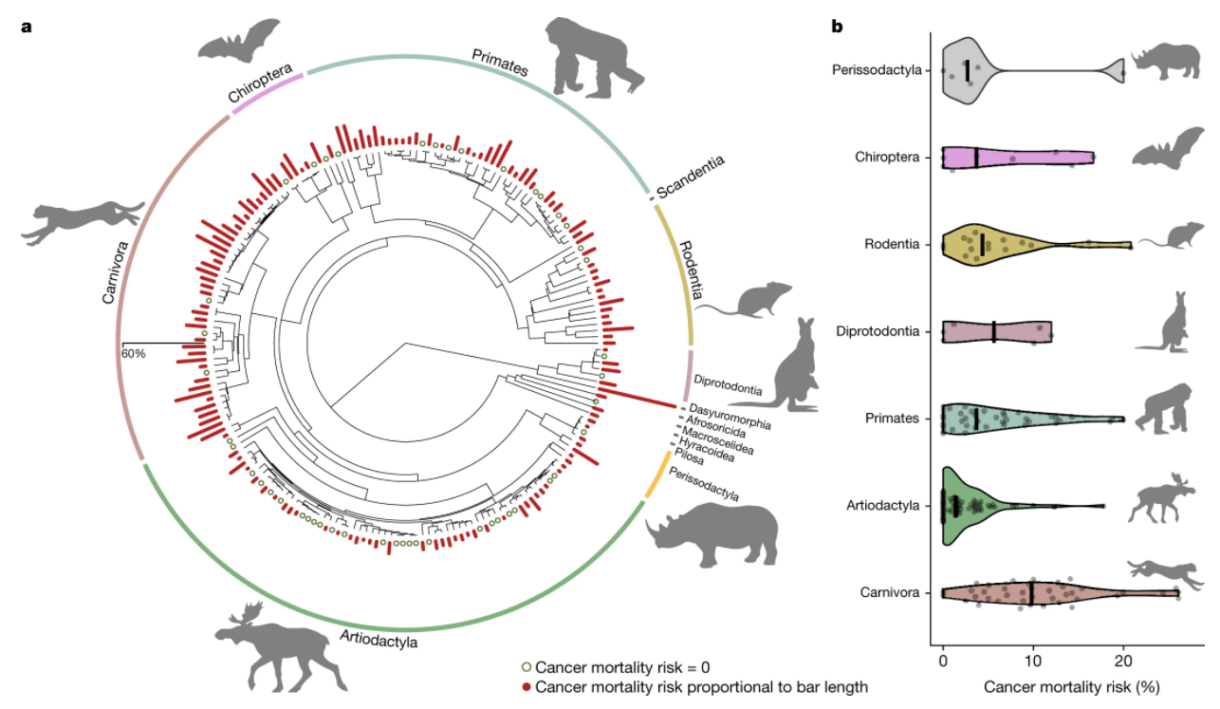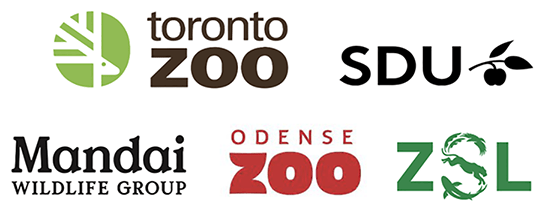Documenting cancer in wild animals is often extremely challenging due to a lack of information on the age of individuals, difficulty retrieving the bodies for necropsy, and the likelihood of cancer negatively influencing survival before cancer could be detected. Although data on wild populations would be indispensable to describe natural incidences of malignancies, such data, especially with corresponding ages and demographic histories, are unfortunately still far from our reach. Therefore, to estimate cancer mortality risk, this study uses data recorded in the Species360 Zoological Information Management System (ZIMS) by zoos for animals in their care.
In the paper “Cancer risk across mammals” published in Nature, the authors build and analyze a database on cancer-related mortality using data on adult zoo mammals (110,148 individuals, 191 species) and map age-controlled cancer mortality to the mammalian tree of life.

The authors demonstrate the universality and high frequency of oncogenic phenomena in mammals and reveal substantial differences in cancer mortality across major mammalian orders. The authors include Species360 Director of Science, Prof. Dalia Conde, and CSA member Prof. Fernando Colchero that together with 10 coauthors show that the phylogenetic distribution of cancer mortality is associated with diet, with carnivorous mammals (especially mammal-consuming ones) facing the highest cancer-related mortality.
Moreover, they provide unequivocal evidence for the body size and longevity components of Peto’s paradox by showing that cancer mortality risk is largely independent of both body mass and adult life expectancy across species.
Read the full article here.
Or listen to an interview in French or Spanish
Les données de zoos mises à profit pour documenter le cancer
Quand il s’agit de cancer, la taille et la longévité des espèces animales ne semblent pas être des facteurs de risque déterminants chez les mammifères. C’est ce qui ressort d’une étude réalisée à partir des données de 1200 zoos et aquariums de partout dans le monde.
¿Qué especies de mamíferos son más propensas a desarrollar un cáncer?
El estudio profundiza en la paradoja de Peto, que constata que la incidencia de cáncer en distintas especies de animales no guarda una correlación con el número de células de un organismo.








